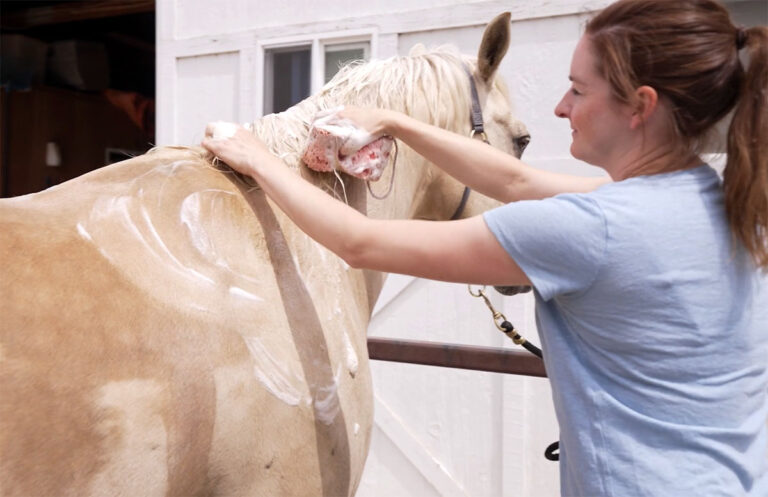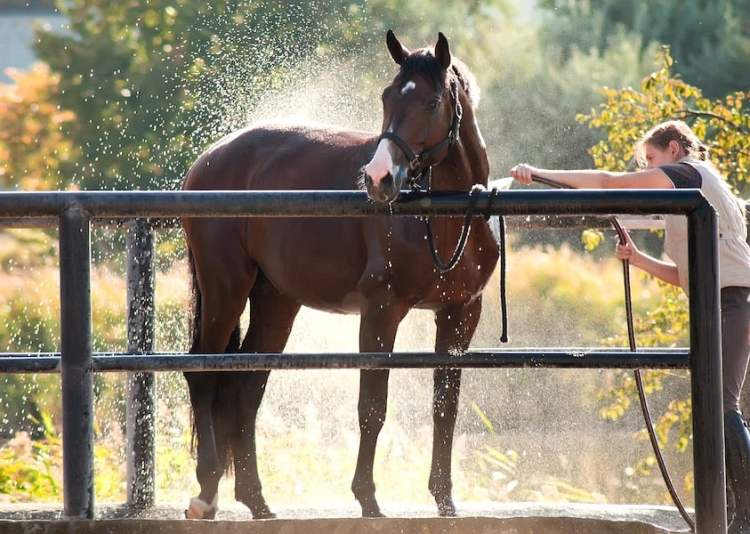For many horse enthusiasts, understanding what does wet saddle pads mean is an essential part of ensuring their horse’s comfort and well-being. A wet saddle pad can tell us a lot about the condition of the horse, the fit of the saddle, and the overall riding experience. In this article, we will explore the significance of wet saddle pads, how they relate to equine comfort, and how they can guide us in maintaining the health of our beloved horses.

The Significance of Saddle Pads in Equestrianism
Saddle pads play a crucial role in equestrian activities. They serve as a layer of protection between the horse’s back and the saddle, helping to distribute pressure evenly and reduce friction. A well-fitted saddle pad can enhance the horse’s comfort and performance during rides.
The Role of Wetness in Saddle Pads
The presence of wetness or dampness in saddle pads raises questions about the horse’s physical state. Wet saddle pads are often indicative of effort and exertion. As horses work, they naturally sweat, and this moisture is absorbed by the saddle pad. Observing the pattern and extent of this wetness provides valuable insights into the fit of the saddle and the comfort of the horse.
Analyzing Wet Saddle Pads
Analyzing the wet areas of a saddle pad can help equestrians determine how well a saddle is fitting. If moisture spreads evenly across the pad, it suggests that the saddle is distributing pressure uniformly. However, concentrated wet spots might indicate pressure points, which can lead to discomfort or even soreness for the horse.
Identifying Pressure Points
Concentrated areas of wetness can highlight pressure points where the saddle puts uneven pressure on the horse’s back. These pressure points may result in irritation or sores, highlighting the need for adjustments in the saddle fit.
Steps to Ensure Proper Saddle Fit
Ensuring that the saddle fits properly over time requires regular assessment. Horse riders can perform checks by observing the saddle pad’s wetness patterns after each ride. Here are some steps to ensure a proper saddle fit:
Saddle Fitting Assessment
1. After removing the saddle, check the evenness of the wet spots on the pad.
2. Ensure that there are no excessively wet or dry areas, as these could indicate poor fit.
3. Monitor your horse’s reactions to note any signs of discomfort under the saddle.
Common Mistakes in Saddle Fitting
Many equestrians face challenges when fitting saddles, which can affect the horse’s comfort. Common mistakes include improper saddle width, incorrect panel shape, and uneven weight distribution.
Saddle Width
The width of the saddle should match the size of the horse’s back. A saddle that is too narrow can cause pressure points, while one that is too wide might slip or tilt during rides.
Enhancing Horse Comfort
To enhance a horse’s comfort, proper saddle fitting should be complemented by regular check-ups of tack and other gear. Keeping equipment in top condition prevents unnecessary discomfort to the horse.
Regular Maintenance
Regularly inspect and clean your saddle pads and tack to ensure they remain in good condition. Learn more about how to properly maintain your riding gear by visiting [How to maintain riding gear](https://ofhorse.com/how-to-maintain-and-store-your-horse-riding-gear/).
The Importance of Rider Education
Riders need to be educated about their gear’s effects on their horses. Understanding the implications of wet saddle pads is part of this education.
Words of Caution
Ignoring signs of improper fit can lead to significant health problems for the horse. Therefore, riders should remain vigilant about changes in the horse’s behavior or physical state.
The Relationship Between Effort and Wetness
Understanding that wet saddle pads are also a sign of effort can reassure horse owners. A hard-working horse will naturally sweat more, leading to wetter pads.
Evaluating Horse Fitness
In some cases, excessive wetness may also be indicative of the horse’s fitness level. Monitoring how quickly a horse sweats and dries after a ride can provide valuable information about its current physical condition.
The Connection Between Weather and Wetness
Wet saddle pads are not only a product of effort but also affected by the weather. In warmer climates, horses are likely to sweat more, which can lead to the appearance of wetter saddle pads.
Climate Considerations
Considering the climate when analyzing saddle pad wetness is crucial. Riders in hotter areas need to take extra care of their horses, ensuring proper hydration and cooling down strategies are in place.
To learn more about preventing injuries through proper care, read [Injury Prevention Tips](https://ofhorse.com/preventing-injuries-in-horseback-riding-safety-tips-for-beginners/).
Choosing the Right Saddle Pads
There are various types of saddle pads available in the market. Choosing one that suits your horse’s needs and comfort can make a significant difference.
Types of Saddle Pads
1. Gel Pads – Offer shock absorption
2. Foam Pads – Provide comfort and stability
3. Wool Pads – Known for their moisture-wicking properties
Explore the variety of essential riding gear by visiting [Essential Riding Gear](https://ofhorse.com/top-5-essential-riding-gear-items-for-every-equestrian/).
Understanding Equine Body Language
Assessing a horse’s comfort doesn’t only rely on physical indicators like wet saddle pads. Understanding a horse’s body language is integral to gauging its well-being.
Interpreting Signs
Notice any changes in the horse’s posture, ears, and eyes to immediately identify any discomfort it might be experiencing due to saddle fit.

FAQ Section
What is the primary reason for analyzing wet saddle pads?
Wet saddle pads help determine how well a saddle fits and if it’s causing any discomfort or pressure points on the horse’s back.
How often should saddle fit assessments be conducted?
It’s recommended to conduct saddle fit assessments regularly, ideally after each comprehensive riding session or if there’s a noticeable change in behavior.
Can weather affect the wetness of saddle pads?
Yes, weather conditions, especially hotter climates, can affect how much a horse sweats, resulting in wetter saddle pads.
For more information on handling common equine emergencies, visit [Horse First Aid Basics](https://ofhorse.com/horse-first-aid-101-handling-common-emergencies/).








